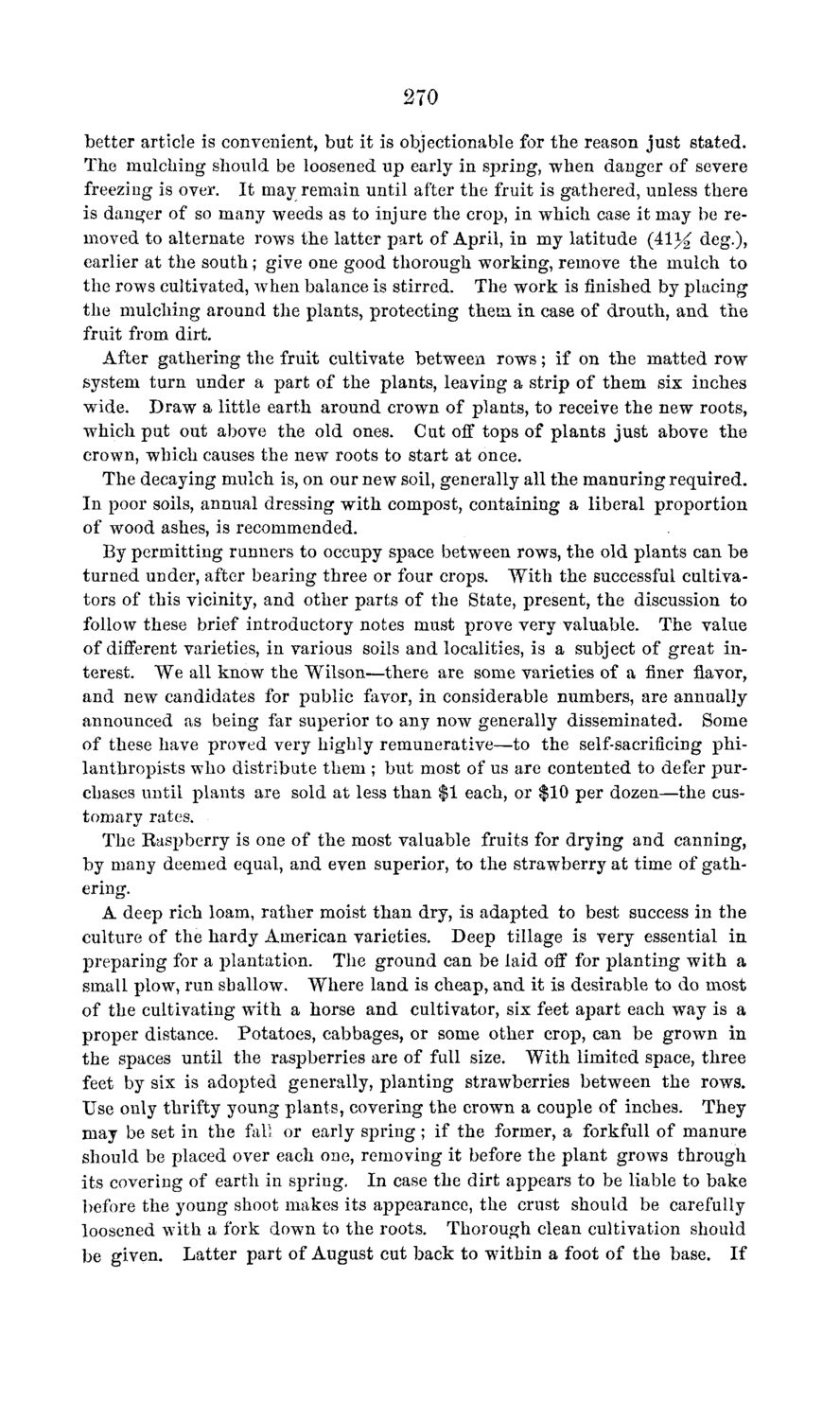| |
| |
Caption: Board of Trustees Minutes - 1869
This is a reduced-resolution page image for fast online browsing.

EXTRACTED TEXT FROM PAGE:
270 better article is convenient, but it is objectionable for the reason j u s t stated. The mulching should be loosened up early in spring, when danger of severe freezing is over. It may remain until after the fruit is gathered, unless there is danger of so many weeds as to injure the crop, in which case it may be removed to alternate rows the latter part of April, in my latitude (41)^ deg.), earlier at the south; give one good thorough working, remove the mulch to the rows cultivated, when balance is stirred. The work is finished by placing the mulching around the plants, protecting them in case of drouth, and t h e fruit from dirt. After gathering the fruit cultivate between r o w s ; if on the matted row system turn under a part of the plants, leaving a strip of them six inches wide. Draw a little earth around crown of plants, to receive t h e new roots, which put out above the old ones. Cut off tops of p l a n t s just above t h e crown, which causes the new roots to start at once. The decaying mulch is, on our new soil, generally all the manuring required. In poor soils, annual dressing w i t h compost, containing a liberal proportion of wood ashes, is recommended. By permitting runners to occupy space between rows, the old plants can be turned under, after bearing three or four crops. With the successful cultivators of this vicinity, and other parts of the State, present, the discussion to follow these brief introductory notes must prove very valuable. The value of different varieties, in various soils and localities, is a subject of great interest. We all know the Wilson—there are some varieties of a finer flavor, and new candidates for public favor, in considerable numbers, are annually announced as being far superior to any now generally disseminated. Some of these have proved very highly remunerative—to the self-sacrificing philanthropists who distribute them ; but most of us are contented to defer pur^ chases until plants are sold at less than $1 each, or $10 per dozen—the customary rates. The Raspberry is one of the most valuable fruits for drying and canning, by many deemed equal, and even superior, to the strawberry at time of gathering. A deep rich loam, rather moist than dry, is adapted to best success in t h e culture of the hardy American varieties. Deep tillage is very essential in preparing for a plantation. The ground can be laid off for planting with a small plow, run shallow. Where land is cheap, and it is desirable to do most of the cultivating wdth a horse and cultivator, six feet apart each way is a proper distance. Potatoes, cabbages, or some other crop, can be grown in the spaces until the raspberries are of full size. W i t h limited space, three feet by six is adopted generally, planting strawberries between t h e rows. Use only thrifty young plants, covering the crown a couple of inches. They may be set in the fall or early s p r i n g ; if the former, a forkfull of manure should be placed over each one, removing it before the plant grows through its covering of earth in spring. In case the dirt appears to be liable to bake before the young shoot makes its appearance, the crust should be carefully loosened with a fork down to the roots. Thorough clean cultivation should be given. Latter part of August cut back to within a foot of the base. If
| |